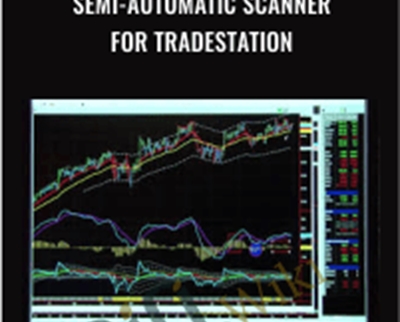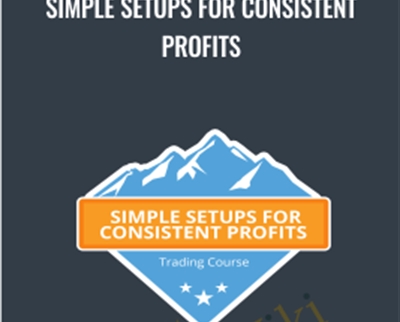2003 Master Class – Gerald Appel
$65.00
2003 Master Class – Gerald Appel Download. 1. NASDAQ Composite and Current Volatility
2. The Long Term Moving Average Channel of NASDAQ
3. MACD Patterns of…
Salepage link: At HERE. Archive:
Master Class with Gerald Appel
at the January 2003 Caribbean Traders’ Camp
Session 1
Market Indices and Chart Formations
- 1. NASDAQ Composite and Current Volatility
- 2. The Long Term Moving Average Channel of NASDAQ
- 3. MACD Patterns of the S & P 500 Threatening to Break Long Term Downtrend
- 4. NASDAQ /NYSE Index Relative Strength Favors Nasdaq – Bullish
- 5. Bullish and Bearish Chart Patterns 1
- 6. Bullish and Bearish Chart Patterns 2
- 7. Angle Changes
- 8. T-formations
- 9. NASDAQ Composite T-Formations
- 10. Andrew’s Pitchfork
Session 2
Moving Average Convergence-Divergence
- 1. Illustration of MACD Concept
- 2. Introducing the Signal Line
- 3. The Basic Buy and Sell Signal
- 4. Using Divergences to Recognize the Reliable Signals
- 5. Further Examples of Divergences
- 6. Comparing MACD to a Price Momentum Oscillator
- 7. Comparison of MACD and RSI
- 8. Different MACD’s for Buy and Sell Signals
- 9. MACD during a Strong Market Uptrend
- 10. MACD during a Strong Downtrend
- 11. Treasury Bonds, MACD, and a Strong Uptrend
- 12. The Stop-loss Signal for an Unsuccessful Trade
- 13. Using Trendlines to Confirm Buy and Sell Signals
- 14. Long-Term MACD Signals – The Start of a Bull Market
- 15. A Long Bull Market – Then the Crash
- 16. Using Monthly MACD to Define Very Major Trends
- 17. Using Time Cycles to Confirm MACD Signals
- 18. Using Time Cycles – 2nd Example
- 19. When MACD Does Not Provide Timely Signals
- 20. Four Stages of MACD and the Market Cycle
- 21. The 1998 Bottom
- 22. A Bull and then a Bear Market
- 23. Catching the Lows – the 1984 bottom
- 24. A Second Example of Bottom Finding
- 25. A Final Example of Bottom Finding
- 26. Bear Market Rally, 2001 – 2002
Session 3
Riding the Market: Strategies to Stay on the Right Side of Market Trends
- 1. Summary
- 2. Drawdown Illustrated
- 3. Some Risk-Adjusted Performance Measures (Higher = Better)
- 4. “Normal” Risks for Various Investments (not worst cases)
- 5. Basic Risk Control Strategies
- 6. Core Portfolio – Designed to Minimize 1–year Losses
- 7. Four Parts of the Portfolio
- 8. Core Portfolio Performance History
- 9. Minimum Risk Portfolio
- 10. Core Portfolio at Vanguard
- 11. Core Portfolio with ETF’s
- 12. Concept of Relative Strength
- 13. Example of Relative Strength Analysis: NYSE Composite Rises Faster when NASDAQ is Strong
- 14. Large Cap Value/Growth Model
- 15. SVX Divided by SGX (monthly)
- 16. Performance of SVX/SGX Model since 1994
- 17. Average Performance of Large Cap Value Mutual Funds vs. Large Cap Growth Mutual Funds since 1962
- 18. Large Cap Value Divided by Large Cap Growth
- 19. Large Cap versus Small Cap Model
- 20. S & P 500 Divided by S & P 600 (monthly)
- 21. Performance of S & P 500/SML Model since 1995
- 22. S & P 500 Index vs. Average Small Cap Mutual Funds since 1979
- 23. S & P 600/Cash Timing Model Rules
- 24. S & P Small Cap/Cash Timing Model
- 25. S & P 600/Cash Model Results
- 26. Interest Rates and Stocks
- 27. Stocks and Interest Rates
- 28. Results: Rates and Stocks, 1962 – 2002
- 29. Avoid Sales Loads
- 30. How is Your Fund Doing?
- 31. Mutual Funds vs S & P 500
Session 4
Four Presentations
A – Analyzing the Stock Market with Moving Average Trading Bands
- 1. Basic Concept of Moving Average Trading Channel
- 3. Different Phases within the Moving Average Trading Channel (NASDAQ Composite, Daily)
- 3. Different Phases within the Moving Average Trading Channel (NYSE Composite, monthly)
- 4. Long-Term Weekly Chart –NYSE Index 21-Week Average, 6% bands
- 5. Moving Average Channels in a Flat Market Period – 1991-1992
B – Volatility Peaks and Major Market Bottoms
- 6. The NASDAQ Composite and Historical Volatility, 1970 – 1979
- 7. The NASDAQ Composite and Historical Volatility, 1980-`1989
- 8. The NASDAQ Composite and Historical Volatility, 1990-1999
- 9. The NASDAQ Composite and Historical Volatility,2000-2002
- 10. Peak Volatility, Subsequent Market Movement
C – The 4 Pillars of Investment Success – Long-Term Growth with Greater Safety
- 11. Investment Strategies for Uncertain Times
- 12. Why Safer Stock Funds Work Better
- 13. Avg % Gain in Winning Months – Avg % Loss in Losing Months Based on Volatility Groups
- 14. Gain Per Year, Based on Volatility Groups – 20 Years
- 15. Closed Drawdowns Based on Volatility Groups
- 16. Fund Rotation Strategy – Performance by Performance Rank
D – The Power of NASDAQ
- 17. NASDAQ Composite – NASDAQ/NYSE Minus 10 Week Moving Average, 1970-1973
- 18. NASDAQ Composite – NASDAQ/NYSE Minus 10 Week Moving Average, 1980-1984
- 19. NASDAQ Composite – NASDAQ/NYSE Minus 10 Week Moving Average, 1997-2002
- 20. NASDAQ Composite When NASDAQ is Dominant vs. NASDAQ buy and Hold – NYSE Composite When NASDAQ is Dominant vs. NASDAQ buy and Hold
- 21. NASDAQ Relative Strength Summary
- 22. Relative Strength with Intermediate Monetary Filter
Here's an overview of the prominent keywords and a list of famous authors:
Business and Sales: Explore business strategies, sales skills, entrepreneurship, and brand-building from authors like Joe Wicks, Jillian Michaels, and Tony Horton.
Sports and Fitness: Enhance athleticism, improve health and fitness with guidance from experts like Shaun T, Kayla Itsines, and Yoga with Adriene.
Personal Development: Develop communication skills, time management, creative thinking, and enhance self-awareness from authors like Gretchen Rubin, Simon Sinek, and Marie Kondo.
Technology and Coding: Learn about artificial intelligence, data analytics, programming, and blockchain technology from thought leaders like Neil deGrasse Tyson, Amy Cuddy, and Malcolm Gladwell.
Lifestyle and Wellness: Discover courses on holistic health, yoga, and healthy living from authors like Elizabeth Gilbert, Bill Nye, and Tracy Anderson.
Art and Creativity: Explore the world of art, creativity, and painting with guidance from renowned artists like Bob Ross and others.
All the courses on WSOlib are led by top authors and experts in their respective fields. Rest assured that the knowledge and skills you acquire are reliable and highly applicable.
Specification: 2003 Master Class – Gerald Appel
|
User Reviews
Only logged in customers who have purchased this product may leave a review.













There are no reviews yet.